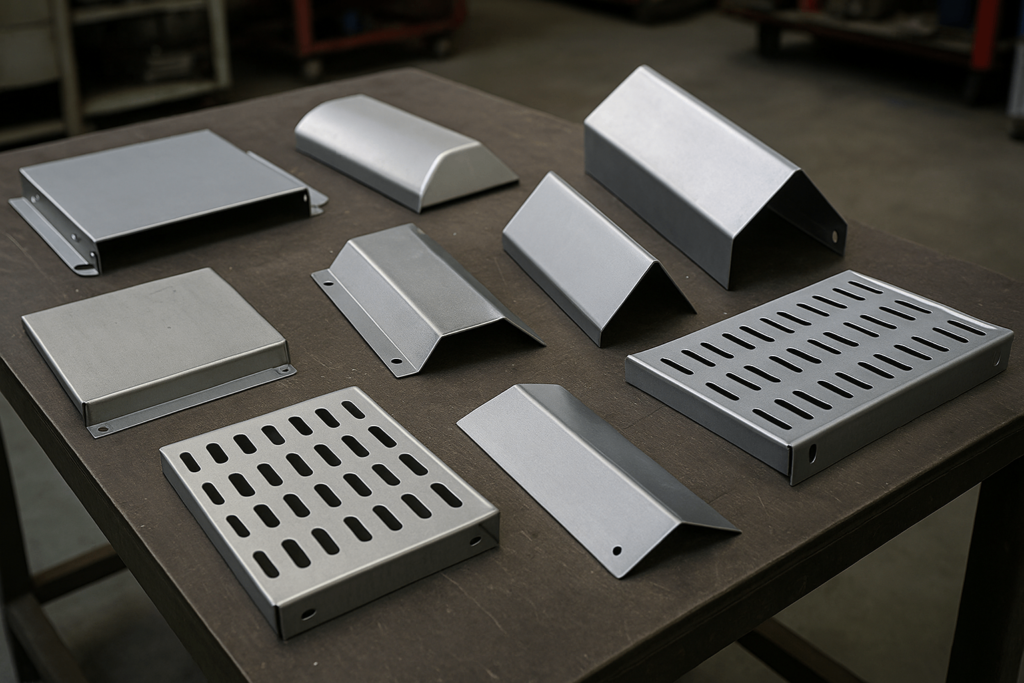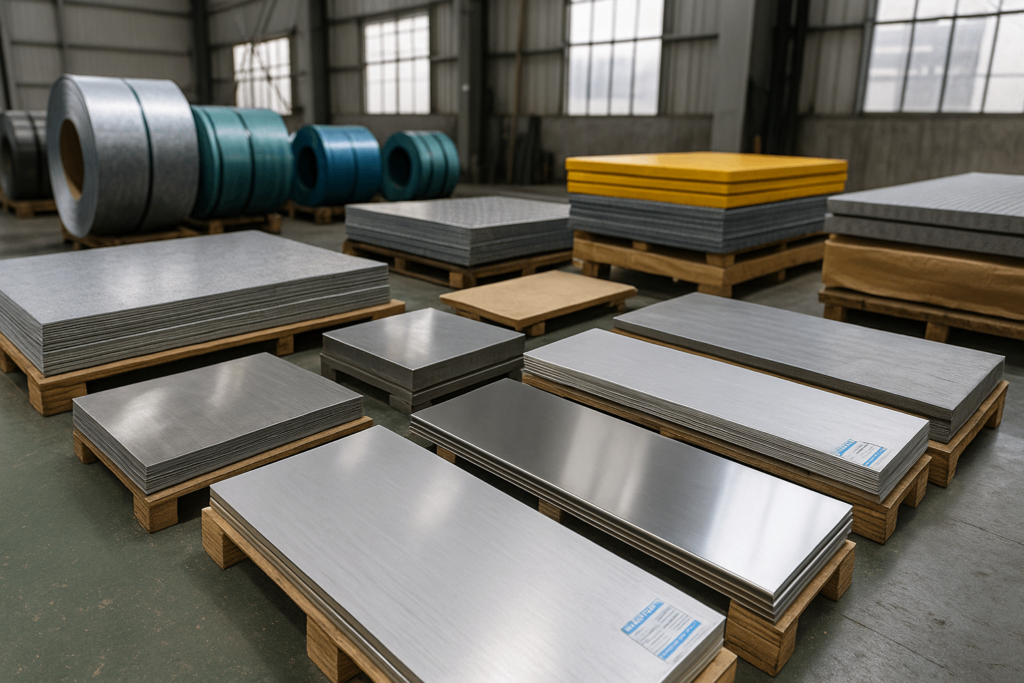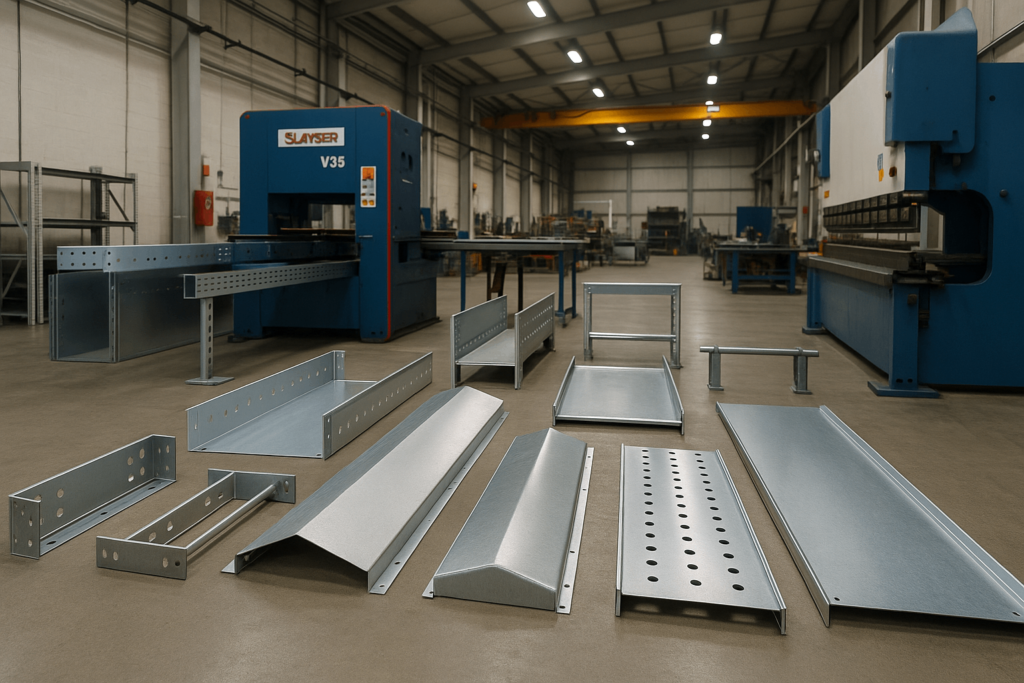Cable tray covers may appear secondary in electrical system planning, but their influence on infrastructure integrity is undeniable. In practice, covers help minimize environmental exposure, maintain code compliance, and improve system lifespan.
For wholesale buyers, especially those sourcing for multi-site deployment or resale, this choice impacts total project ROI. It’s not just about shielding wires—it’s about predictable performance, reduced maintenance, and ease of standardization across orders.
YISHANG supports global buyers with OEM-compatible cover systems built on 26+ years of sheet metal fabrication expertise.
Functional Design: Selecting Covers That Solve Problems
Cable tray covers are more than lids. Their shape solves real engineering challenges like water runoff, airflow, and protection from external impacts.
Dome-shaped (Hat) covers are designed to shield overfilled trays and deflect falling debris. They’re often chosen in facilities where overhead exposure is common, like outdoor mechanical yards.
Flat covers, often applied in corridors and data centers, work well when space is constrained and aesthetics matter. Adding a flange improves sealing in clean environments.
Peaked & Corrugated designs perform best in outdoor settings. The corrugation reinforces structure without adding much weight—critical in seismic zones.
Finned trays take ventilation a step further and are used in industrial control panels.
Hinged covers are gaining demand among procurement teams needing quick access for maintenance. Some YISHANG clients combine flanged and hinged designs for added sealing with functional flexibility.

Matching Material to Application: A Buyer’s Viewpoint
Material dictates longevity, corrosion resistance, and weight—all central to procurement planning. Many overseas buyers now weigh not only durability but logistical handling (like shipping cost per kg).
| Material | Corrosion Resistance | Weight | Heat Tolerance | Cost Level | Common Use |
|---|---|---|---|---|---|
| Galvanized Steel | Medium | Medium | Moderate | Low | Warehouses, low-risk environments |
| Stainless Steel 304 | High | Medium | Excellent | Medium | Food/Pharma factories |
| Stainless Steel 316 | Very High | Medium | Excellent | High | Marine, chemical facilities |
| Aluminum | High | Low | Moderate | Medium | Data centers, rooftops |
| FRP (Fiberglass) | High | Medium | Moderate | Medium | Offshore, chemical plants |
Each of these can be modified with finishing processes—anodized aluminum sheet metal, powder coatings, and PVC overlays all reduce environmental vulnerability. If you’re wondering how to cut aluminum sheet metal, cutting of sheet metal, or how to handle bending of sheet metal, our design team can provide processing specifications for each cover type.

Environment-Driven Selection: Tailoring Covers to Operating Conditions
Not all environments labeled “indoor” or “outdoor” behave alike. Buyers must evaluate actual operational conditions such as:
Humidity and washdown compatibility
Salt-air and UV resistance
Animal resistance (rodents, birds)
Wind/snow load ratings
A poultry facility might be indoor yet chemically aggressive. A telecom station may be outdoor yet free of corrosive elements.
This is where tray cover configuration should begin—not from tray type, but from environmental classification. For example, high-humidity locations call for sealed stainless or PVC-coated options; dry high-temperature zones may benefit from perforated or anodized aluminum covers.
YISHANG offers an environmental matrix tool, allowing procurement teams to map performance classes to specific covers, minimizing compatibility risks from the start.
Integrated Thinking: Covers Within the Cable Management Ecosystem
For bulk procurement, you’re not just ordering parts—you’re integrating systems. Cable tray covers must fit seamlessly with brackets, risers, lath machines, and support arms.
Too often we’ve seen projects where covers are added after tray procurement—causing mismatch issues. YISHANG offers full compatibility support by pre-verifying cover and tray systems during quoting.
Key alignment points:
Weight vs span ratio: Heavy covers (e.g., 1/4 steel plate 4×8 price range) need reinforced supports
Tray fill and airflow: Oversized cable fills demand vented or finned designs
Standards: NEC, NEMA VE1, and IEC 61537 compliance are often buyer-mandated. All YISHANG products meet ISO 9001 with available RoHS documentation.

Application Scenarios with Measurable Gains
Based on YISHANG project archives and client deployments:
Medical Assembly Plant (U.S.)
Need: Easy-to-clean, corrosion-resistant system
Chosen: SS304 flat perforated cover with brushed finish
Outcome: Achieved FDA audit compliance 2 weeks early
Wind Farm Substation (Norway)
Need: Snow-shedding, rust-proof cover
Chosen: Peaked 316 cover with chromate coating
Outcome: Zero rust after 5 winters, no downtime
Smart Warehouse (Singapore)
Need: Access for AGV-guided inspections
Chosen: Flanged galvanized cover with snap clamps
Outcome: Reduced access time by 45%, lowered cable damage from heat
Agricultural Power Unit (UAE)
Need: UV and sand-resistant outdoor protection
Chosen: Dome-shaped aluminum cover with UV coating
Outcome: Maintained integrity after 3 sandstorm cycles
Mining Control Station (South Africa)
Need: Vibration-proof, easily removable maintenance cover
Chosen: Hinged galvanized cover with clamp-lock mechanism
Outcome: Saved 35% on inspection cycle time
Each solution is not about product alone—it’s about minimizing downstream failure risks. That’s what procurement stakeholders really care about.

5-Step Evaluation Logic for Wholesale Buyers
Grade the Environment: Think in terms of chemical, thermal, and biological stress—not just “indoor/outdoor”
Project Thermal Load: Especially in data centers or control rooms. Think airflow.
Access Logic: How often will staff need access? Hinged or modular covers save time.
Total Cost: Look beyond unit cost. Compare TCO over 5+ years.
Certifications Required: Ensure every component in the BOM is compliant
We provide downloadable spec templates that help align technical and procurement teams early—avoiding miscommunication and reducing costly rework downstream. Especially when sourcing accurate sheet metal components.
Where Covers Are Going: Smarter, Lighter, More Compatible
Rather than focusing on abstract technology, procurement teams are asking: how will next-generation covers simplify installs, reduce costs, and integrate with evolving facilities?
Emerging directions in cable tray cover manufacturing include:
Smart Covers: Embedded tags or tracking features for efficient inventory and lifecycle tracking
Eco-Friendly Materials: Use of anodized aluminum and low-VOC coatings aligned with sustainability mandates
Tool-Free Systems: Snap-fit or magnetic modules for rapid installation and zero-tool maintenance
These innovations are directly influencing installation time, maintenance efficiency, and compliance—areas that most affect cost and procurement predictability.
Final Thoughts: From Covers to Confidence
The tray cover isn’t just an accessory—it’s a control point for performance, durability, and standardization. When selected and implemented wisely, it safeguards margins and enables procurement reliability at scale.
YISHANG supports wholesale and OEM clients with engineering-driven cover systems backed by ISO 9001:2015 workflows. Spec sheets are available on request for validation and internal evaluation.
For your next project or sourcing cycle, let’s build cable protection that works smarter—together.

